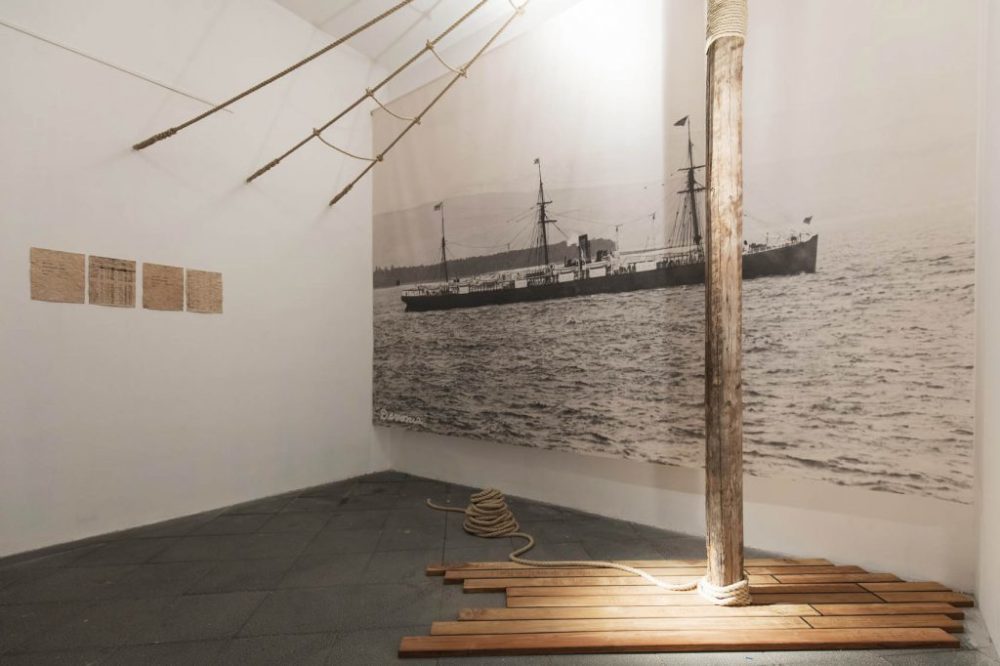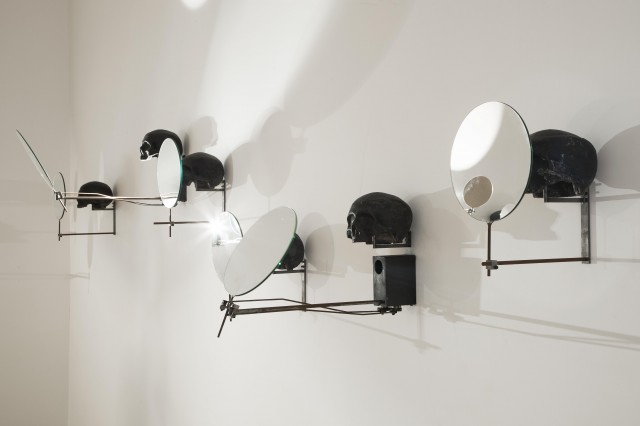Maurizio Igor Meta (Milan, 1973), writer, actor, performer and filmmaker, trained himself in Scenic Art for Professional Actors and graduated in Law. He studied with several international and Italian masters of theatre, paying a particular attention on the study of the motion. In 2006 he was the author and performer of the monologue Il Rivoluzionario (“The Revolutionary”) receiving for it the award as Best Actor at the Rota in Festival. In 2008 he wrote Re Sacerdote e Profeta (“King, Priest and Prophet”), with which, in 2010, he obtained an artistic residency at La Corte Ospitale in Rubiera as part of the residential project Forever Young?, debuting in the national premiere at the Subasio Theatre of Spello. With this work in 2013 he receives the Antonio Landieri Award; in the same year the publishing house Caracò published the drama in the “Teatri di carta” series. Later, he created the booktrailer of the book, achieving two nominations, Best Direction e Best Commission, at the 1. Caffeina Booktrailer Festival. In 2015 on November the 19th, Meta sails from Naples’s port with a cargo ship to retrace the steps of the great-grandfather Domenico, who, on November 1890, choose to leave for the United States in search for luck and work, helping to build, with pick and shovel, the railways of the Pennsylvania Railroad (the old US railways company). Meta listens to the stories of elderly relatives, family stories, stories of generations of emigrants, of hunger and war, but also acts of love that have given to the artist the land which has been handed down from child to child. The artist becomes the keeper of fragments and tales of life, in order to prevent them to get lost in the oblivion of memory, as some lives of young and old emigrants run the risk to be forgotten among many others, lost among the millions of landings which are still described today in the daily news. Starting from the feelings he had in retracing his ancestor’s journey, reliving the twenty-one days of sailing into the sea, and combining them with the historical researches on the life of Italian immigrants in the United States, the artist creates within the Madre’s collection a set-up in progress which returns milestones and sensations of an epic and poetic journey: the time of his leaving and of his grand-grandfather, the journey on the ship, the landing in Ellis Island (New York), the return to the origins. In fact, he stopped in New York for three months living in the same places where his ancestor lived and looked for the railways he built. Ellis Island was born from that life experience. A multidisciplinary project which includes the Journey on the cargo ship, the Solo Theater with the same title as Ellis Island, which debuted in 2017 at the Teatro Nuovo for the Observatory of the Napoli Teatro Festival Italia, a Documentary, a Book and an Exhibition.
The installation The First Ship, shown at Madre in the context of the project Per_forming a collection. For an art archive in Campania, is an interconnecting writing, image and sound. It represents the very first chapter of what takes shape as a wider project (ON MY GREAT GRANDFATHER STEPS – Toward Ellis Island) to which the artist has been working for two years, structured in a multidisciplinary model in which photography, video projection, sound, writing and performance are used on combined levels that overlap and dissolve themselves one inside the other, with the aim of involving the visitor/audience. “During my research I discovered with marvelous wonder that on the first ship on which in 1890, at the age of 21, my great-grandfather Domenico embarked – the S.S. Devine of the Anchor Line – eleven years before the writer Robert Louis Stevenson had also embarked, in August 1879, an experience that led him to write The Amateur Emigrant. Stevenson, indeed, was not a steerage passenger (“third-class passenger”), still he spent much time with those travelers on a daily basis. He lived that journey with the same spirit of the emigrants. He was, in some ways, himself an emigrant.” The image of the Devonia, reproduced in room on cotton fabric, comes from an original vintage black and white postcard which has arrived to the artist during his long researches: the same fate that, cleverly weaving the threads of history, has recorded Stevenson’s boarding on the same ship, and, eleven years later, the boarding of Domenico Meta. The First Ship is therefore the origin, the cause, the beginning of the journey – the one of the great-grandfather and the journey of the artist following his steps, the one of Stevenson and the one of the exhibition project that will be progressively realized at the Madre. The exhibition project will include part of the My Journey photographic reportage, made up of several photographic series, reproducing twenty one prints each (as the days of the artist’s journey, and probably of the great-grandfather and as the age he had at the time of his departure): 21 Days and 21 Suns, with a picture of a sunrise and/or sunset for each day of navigation; 21 Crew, with twenty-one images of the crew; 21 Panels, which contain a shot and a part of the travel journal related to that vision; the Ghost Railroads series, with an illustration of abandoned rails where Domenico Meta, and many others Italian emigrants, have worked; and lastly, The Past Falling into the Present series, in which the subjects, in comparison one with each other, reveal an intimate correspondence, beyond the epoch and the place they pass through, creating a short time circuit, a star-gate where the epochs intersect each other, get to know each other, they speak to each other, so that “the past, crystallized, melts, and falls into the present.” The research of Meta becomes in that way both documentary and evocative: a work in which the artist tells and explains, representing an entire generation but also a story that still reverberates in our present.
[Silvia Salvati]





